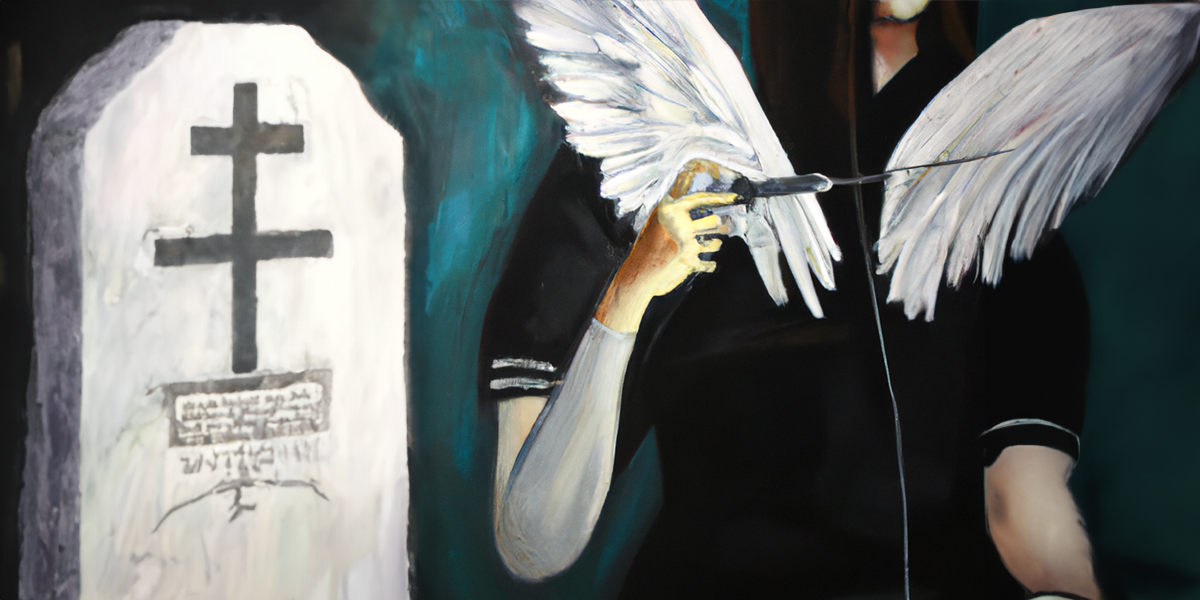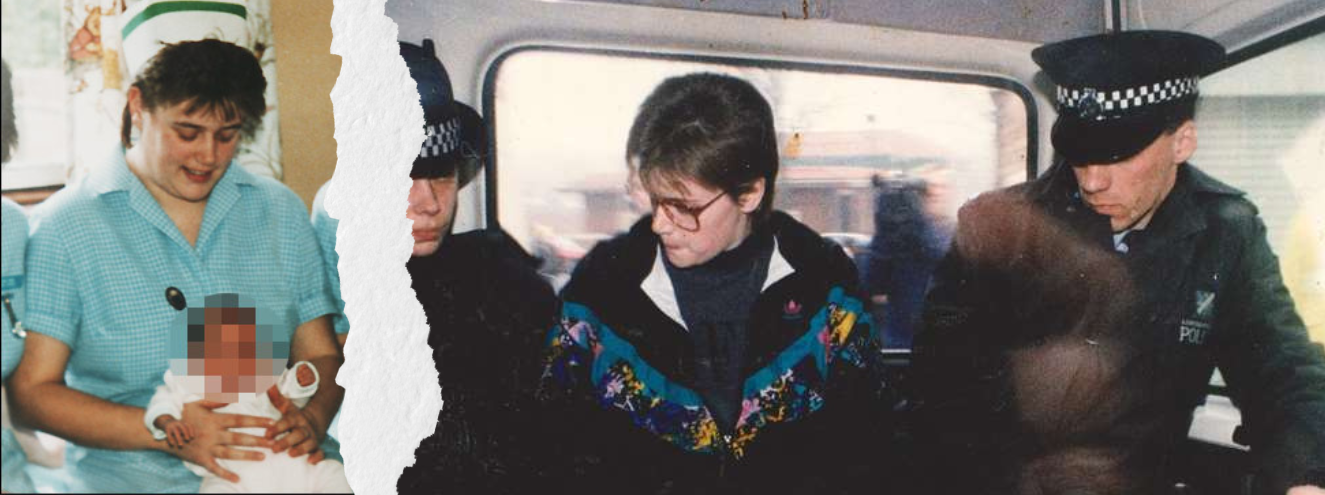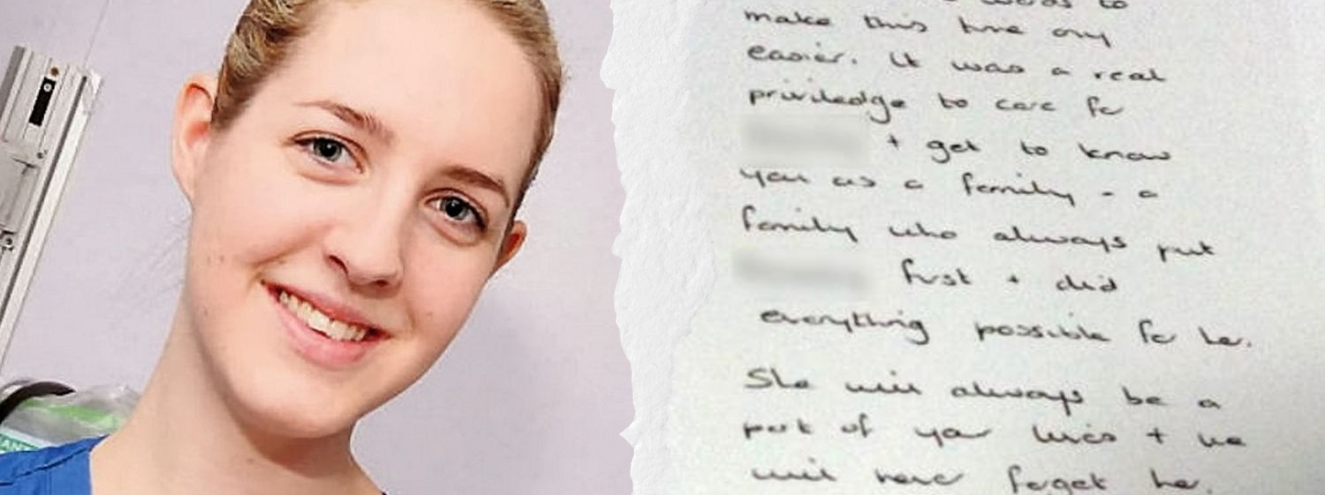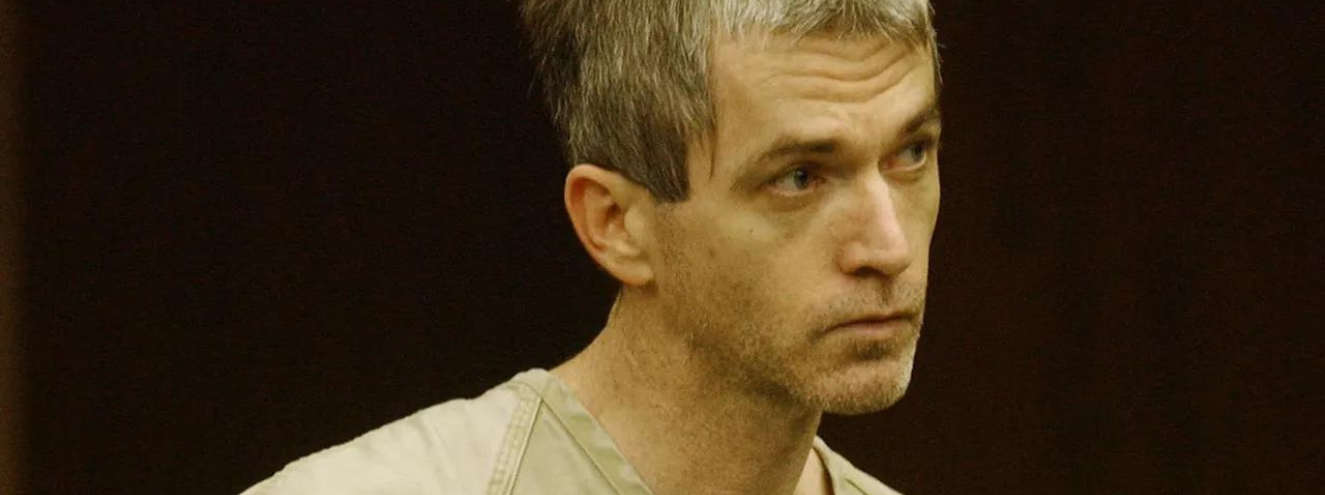By: Andrea Cipriano, MAFP
It’s uncommon for caregivers to intentionally harm — or even kill — another person. But, when it does happen, it’s petrifying.

The “Angel of Death” killer is a rare but terrifying figure in healthcare — a professional turned into the very opposite of what they’re supposed to be. Their crimes have provoked fear, anger, and questions about trust in the people sworn to “do no harm.”
Their deadly motivations range from perverse mercy to cruel sadism, but all Angel of Death killers are ultimately stopped only by vigilant colleagues, rigorous oversight, or the police. Without outside intervention, the killing skill of these healthcare workers would go unnoticed.
What are the 3 types of “Angel of Death” killers?
Currently, criminologists have defined three motivational subtypes of this serial offender. An ‘Angel of Death’ killer generally falls into at least two of these patterns.
First, there’s the mercy killer.
The mercy killer believes they are ending the suffering of patients who are terminally ill or in severe pain. These offenders may justify lethal injections or overdoses as acts of compassion to put patients “out of their misery.” The mercy killer often targets very sick patients, older individuals already nearing the end of their life, or patients with terminal illness.
The deluded healthcare professional convinces themself that they’re performing a noble act by hastening death. In reality, it’s cold blooded murder.
Then, there’s the sadistic subtype.
The sadistic “Angel of Death” killer derives pleasure and satisfaction from having complete control over the life and death of patients. They are often healthcare workers like nurses, doctors, or nursing home attendants who use their position to secretly murder victims. Their methods may include suffocation, poisoning, or inducing heart attacks to avoid drawing suspicion. Former coworkers of convicted killers displaying this subtype have said that the undercover killer was all too eager to be around dying patients.
Lastly, there’s the malignant hero.
The malignant hero killer feels the need to prove themselves by saving patients from the brink of death. They may secretly induce near-fatal conditions in the patient just so they can dramatically reverse it and seem heroic. Conversely, they’ll induce the fatal condition, like contaminating a patient’s IV bag, so when the patient’s condition worsens, they’re the one alerting the rest of the healthcare team. Their crimes are a twisted means to satisfy their need for admiration as a lifesaver, or motivated by wanting to be the savior.
How does an ‘Angel of Death’ kill?
Insulin has been weaponized by these killers most often, sparking a lethal hypoglycemic event or cardiac arrest. It’s a common choice among these offenders because they have access to it, it’s not tracked by hospitals the same way narcotics are tracked, and a nurse doesn’t need to deliver a high dose to do serious damage.

Elizabeth Wettlaufer, a convicted nurse-killer from Canada, told her lawyers that the secluded medication room and lack of oversight on insulin made it the perfect medication to easily “dial-up” and administer.
To add to that, pharmacies also never questioned why more insulin was being ordered than was being prescribed — there was always a benefit of the doubt.
“If there was a way that the insulin was counted, I would not have been able to do what I did without getting caught,” Elizabeth Wettlaufer told her lawyers.
How to Spot an “Angel of Death”
Criminologists at Birmingham City University have identified a cluster of 22 ‘red flag’ warnings in their 2016 study that could set early alarm bells ringing.
Professor David Wilson and Dr. Elizabeth Yardley, the pair who carried out the study at BCU’s Centre for Applied Criminology, concluded that any combination of five to nine red-flagged character traits are suspicious, and that person’s actions should be monitored.
The 22 Red Flags are:
- Moves from one hospital to another
- Secretive/difficult personal relationships
- History of mental instability/depression
- Predicts when someone will die
- Makes odd comments/claims to be ‘Jinxed’
- Likes to talk about death or exhibits odd behaviors when someone dies
- Higher incidents of death on their shift
- They seem inordinately enthused about their healthcare skills
- Makes inconsistent statements when challenged about patient deaths on their shift
- Prefers night shifts, often because of fewer colleagues
- Associated with incidents at other hospitals
- Involved with other criminal activities
- Makes colleagues anxious/suspicious
- Craves attention
- Tries to prevent others from checking on their patients
- Hangs around during death investigations
- In possession of drugs or substances at their home or in their locker
- Lies about personal information
- Possesses materials about poison/serial murder
- Has disciplinary problems
- Appears to have a personality disorder
- Has or had a substance abuse problem
Notorious ‘Angel of Death’ Killers
Beverley Allitt

When many people think of Angel of Death Killers, Beverly Allitt of Corby Glen, United Kingdom, is the first person who comes to mind.
Allitt is considered to be the first offender to be given the moniker “Angel of Death”, fitting the profile of a caregiving killer perfectly.
Her behavior, starting as a young child in the 1970s, was already alarming to adults around her. Allitt was desperate for medical attention, always complaining about a string of fake physical ailments, which eventually resulted in the removal of her perfectly healthy appendix.
Her wounds from the surgery were slow to heal, as she insisted on interfering with the surgical scar. From then on, she was known in her small town to “doctor-hop” because medical practitioners became familiar with her attention-seeking antics.
As a young adult, the dramatics seeped into her personal life. While in a failing relationship with someone she was seeing for some time, Allitt became aggressive and manipulative once she could tell the connection was souring. Ultimately, her boyfriend at the time had to navigate false claims of pregnancy, as well as rape, before he ended the relationship.
By 1991, Allitt obtained her nursing license and began working at the chronically understaffed Grantham and Kesteven Hospital in Lincolnshire. There were only two trained nurses on the day-shift, and one for nights.
This could explain how her murders went undetected for as long as it did.
Over a period of two months, from the end of February to early April, Allitt attacked babies and children more than 36 times. Often, she injected a syringe full of insulin or potassium chloride into her victims.
Allitt’s behavior in adolescence appeared to be typical of Factitious disorder, and as she got older and her behavior failed to elicit the desired reactions in others, she began to harm young patients to satisfy her desire to be noticed. Because of this, experts before trial noted she exhibited behaviors of Factitious disorder imposed on another (formerly known as Munchausen by proxy).
Allitt was charged with four counts of murder, 11 counts of attempted murder, and 11 counts of causing grievous bodily harm. Ultimately, she reportedly admitted to all 13 of her murders to remain at a mental institution rather than go to prison.
On October 3, 2023, it was reported that Allitt was appearing before a mental health tribunal to be assessed for a potential transfer to a mainstream prison. If the transfer takes place, Allitt will be eligible for parole after six months.
Lucy Letby

Lucy Letby is another notorious as Britain’s worst child serial killer. The 33-year-old nurse has been convicted of murdering seven newborns and attempting to kill another six.
Unlike many serial offenders, Lucy grew up without experiencing trauma or abuse. She grew up in the picturesque middle-class England town of Hereford. She was an only child, described by people who knew her as “well-liked” and “respected.”
Letby worked with a team of 30 nurses who provided 24-hour care for hundreds of premature babies at the Countess of Chester’s neonatal unit. The hospital was proud to report that for every 1,000 premature babies, fewer than two would lose their battles.
That was until 2015. Letby joined the nursing team back in 2012, but it seems a switch was flipped that fateful year. In just 14 days that June, three infants suddenly died, and the fourth’s condition rapidly deteriorated.
Letby’s methodology was to deliberately inject air bubbles into the babies through an intravenous line. It was agony for any nurse who responded to the baby’s worsening condition. One senior doctor who analyzed the cases said Letby was “careful” and the babies were selected because of extreme prematurity or inherited conditions — giving her plausible deniability when they died.
Other nurses she worked with remember that Letby would often be the first person to “sound the alarm” over the worsening condition of a baby. Some theorized this was to get the attention of a male doctor who would respond to the alerts, or it was Letby’s way of trying to appear like she was attentive to the baby and tried everything she could.
In reality, she was playing God.
Here, she’s exhibiting both the sadistic archetype and playing the malignant hero.
Letby appeared to target siblings, too: three sets of twins and one set of triplets were among her victims in June of 2016.
The real stomach-churning part — Letby later admitted that she was searching online for the parents of the babies she treated, and the parents of the babies she killed. Police found the records of 2,381 Facebook searches on her phone in the year to June 2016 – about 200 searches a month.
She even searched for them on Christmas Day, as if to hunt for grief-filled posts.
Thankfully, people at the hospital began to catch on. After she was suspended from work pending an investigation into the unusual deaths, she wrote on Post-it notes found in her handbag.
Some of the notes said: “I killed them on purpose because I’m not good enough to care for them,” and “I AM EVIL I DID THIS.”. She also wrote: “I will never have children or marry. I will never know what it’s like to have a family.”
The notes were entered into evidence after her arrest in July 2018. Her case didn’t go to trial until February 2023, where she took the stand in her own defense in May.
The jury of seven women and four men deliberated for over 21 days — 107 hours — before finding her guilty.
Charles Cullen

Working at 9 hospitals across New Jersey and Pennsylvania over a 16-year period — a wake of 29 deaths followed young nurse Charles Cullen.
Growing up in the 1960s in a middle-class New Jersey household, Cullen described his childhood as “miserable.” Cullen claimed he was constantly bullied by older schoolchildren around him. At just nine years old, he made his first of many attempts to take his own life by drinking chemicals from a chemistry set.
In 1977 at 17, Cullen’s mother died in a tragic car accident — a moment in his life that he described as “devastating.” His father died when Cullen wasn’t even one year old yet — so he was a heartbroken orphan who enlisted in the United States Navy after graduating high school.
Unfortunately, the negative torment from others would continue into his young adulthood. He was hazed by fellow crewmen in the Navy until he was discharged in 1984 for “undisclosed reasons.” After leaving the Navy, he started working out of the Saint Barnabas Medical Center in Livingston, New Jersey.
He would kill his first patient a year later by administering a lethal overdose of medication. Over 16 years during his murderous rampage, he would often overdose older patients on the heart medication digoxin, contaminate IV bags with insulin, or inject insulin right into their arms.
Even with his history of mental instability and the number of deaths during his employment at various hospitals, Cullen continued to find work because of a national shortage of nurses. Additionally, no reporting mechanism yet existed to identify nurses with mental health or employment problems.
Cullen was entirely a sadistic Angel of Death killer. His crimes knew no bounds, and he was seemingly killing without a stressor.
The West Orange native is suspected of killing hundreds of people — but he confessed to 40 murders; 29 of which have been confirmed.
In 2022, Netflix debuted a thrilling drama called “The Good Nurse” which details the unbelievable true story of how one of Cullen’s coworkers, Somerset ICU nurse Amy Loughren, had become suspicious of Cullen’s records of drug access. Police assigned Loughren to visit Cullen after work hours, and talk to him with a wire. That evidence helped arrest him.
“It’s just not in my nature to betray one of my friends, but of course I knew I had to,” Loughren, 57, told People, regarding Cullen, who is serving 18 life sentences in prison for his crimes. “What I love about nursing is that I could protect the vulnerable — and I’m a badass nurse.”
Love this post? Meet the Author.
Andrea Cipriano is a Case Researcher and Content Specialist at Uncovered, where she writes for the weekly true crime newsletter, The Citizen Detective. Andrea graduated with a Master of Arts in Forensic Psychology from John Jay College of Criminal Justice where she focused on researching and peeling back the criminal mind. Andrea believes that it’s never too late for justice.
